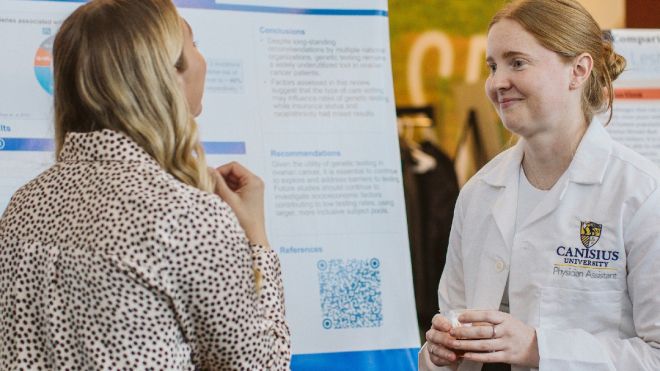
South American Expedition
Six Canisius University students traveled to Argentina to study and soak up Argentine culture. They did so under the guidance of Richard Reitsma, PhD, assistant professor of Spanish and Latin American studies. The students, who traveled from December 27 – January 14, include:
- John T. Denz ’13, a senior philosophy major (Hypatian Scholar)
- Mary M. Floyd ’14, a junior mathematics and statistics major in the All-College Honors Program
- Matthew J. Mullin ’14, a junior English and Spanish major in the All-College Honors Program
- Janelle E. Sabin ’15, a sophomore Spanish major
- Ann Marie L. Rudin ’13, a senior German/French/mathematics and statistics major in the All-College Honors Program
- Matthew P. Schwandt ’14, a junior physical education major (birth-grade 12)
“The trip’s objectives were to give students a clearer understanding of the diversity of Spanish, a more intimate knowledge of Argentine literature and art, and to enable them to better understand the role of Argentina in world affairs, both politically and economically,” says Reitsma.
While in Argentina, students spent several days in Buenos Aires, where they visited museums and government buildings such as La Casa Rosada (the Pink House), which is the executive mansion and office of the president of Argentina; and Plaza de Mayo, the main square in the Monserrat barrio of central Buenos Aires. They also took a four-hour graffiti bike tour (Buenos Aires is known throughout the world for its street art and graffiti).
Students then journeyed to Mar del Plata, where they lived in a youth hostel near the Atlantic Ocean and studied for two weeks at the Universidad Nacional de Mar del Plata. In the morning, they took courses in Spanish, Argentine literature and cooking. In the afternoon, students went on excursions, including a visit to an authentic Argentine ranch. They also took tango lessons and sampled a variety of local cuisine, including chaha, mate, milanesa and empanadas.
“The best experiences we had were when we just walked the streets, absorbed the local culture and discovered how Argentineans function on a day-to-day basis,” says Mullin. “I think our learning was enriched because we were not limited solely to the classroom. The trip gave us the opportunity to see Spanish not just as a course, but as part of our lives.”
Reitsma and students spent New Year’s Eve on the beach, where he familiarized students with local Argentine customs for welcoming in the New Year, which include watching fireworks.
“Dr. Reitsma immediately immersed us into the Argentine culture, which made this experience very up-close and personal,” adds Rudin. “In Mar del Plata, he introduced me to a man named Luis, who is a professor of English at a local university. He taught me such things as the Argentine voting system and many regional words I would not have learned otherwise. If there are two things that translate perfectly from one language to another, they are laughter and friendship."



